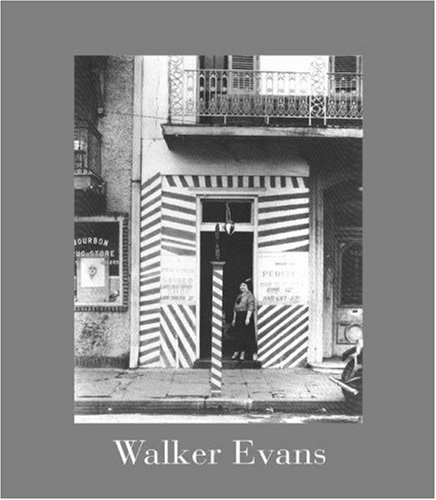Items related to Walker Evans

A tenant farmer's deprivation-lined face. Antebellum homes that have seen better days. The display windows of small-town main streets. The early subway commuter. Billboards. The images made by photographer Walker Evans (1903-1975) are icons of national identity that have shaped Americans' views of themselves and directly influenced important currents of modern art. This major catalogue--published to accompany a retrospective exhibition originating at The Metropolitan Museum of Art and traveling to San Francisco and Houston--presents the full range of Evans's work, from his 1920s black-and-white street scenes of anonymous urban dwellers to the color photographs of signs and letter forms from his final years.
Soon after he returned from Paris to New York City in 1927, Evans began contributing to the development of American photography. He captured the substance of people and buildings with a spare elegance that is utterly unpretentious. His gaze is serious but often amused as well, direct yet never simple. During the 1930s, Evans traveled throughout the South to chronicle the effects of economic hardship. The time that he and writer James Agee spent with Alabama sharecropper families yielded an evocative, honest record of the Great Depression, which was published in book form as Let Us Now Praise Famous Men (1941). Evans then turned his lens back on New Yorkers, photographing subway riders with a camera hidden in his coat. He continued to influence American self-perception as staff photographer for Fortune from 1945 until he accepted a professorship at Yale in 1965.
Evans--who always chose art over what he criticized as artiness--wrote, in Photography (1969), "Whether he is an artist or not, the photographer is a joyous sensualist, for the simple reason that the eye traffics in feelings, not in thoughts. This man is in effect a voyeur by nature; he is also reporter, tinkerer, and spy."
Although his work has received many awards, been enshrined in the best museums, and been exhibited on several continents, Evans's total corpus is only now being fully examined. This important book revises our appreciation of Evans by presenting previously unknown material in an accessible context. Essays by Maria Morris Hambourg, Jeff L. Rosenheim, Doug Eklund, and Mia Fineman offer novel insights into the sources and legacy of Evans's work. The result is a superb exploration of what was achieved by one of our finest, mostly deeply American artists.
"synopsis" may belong to another edition of this title.
"About this title" may belong to another edition of this title.
- PublisherPrinceton University Press
- Publication date2004
- ISBN 10 0691119651
- ISBN 13 9780691119656
- BindingPaperback
- Number of pages336
- Rating
Buy New
Learn more about this copy
Shipping:
US$ 4.25
Within U.S.A.
Top Search Results from the AbeBooks Marketplace
Walker Evans
Book Description Paperback. Condition: new. New Copy. Customer Service Guaranteed. Seller Inventory # think0691119651

